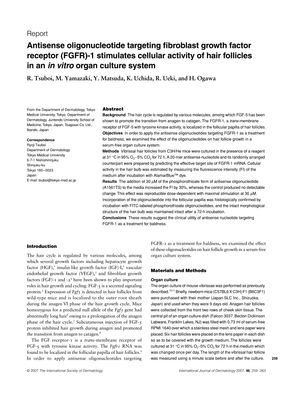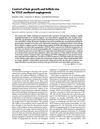Antisense Oligonucleotide Targeting Fibroblast Growth Factor Receptor-1 Stimulates Cellular Activity of Hair Follicles in an In Vitro Organ Culture System
March 2007
in “
International Journal of Dermatology
”

TLDR Targeting FGFR-1 with antisense oligonucleotides may help treat baldness by increasing hair follicle activity.
In the 2007 study, researchers explored the use of antisense oligonucleotides targeting FGFR-1 to stimulate hair follicle activity as a potential treatment for baldness. They treated cultured mouse hair follicles with a 20-mer antisense nucleotide and observed a dose-dependent increase in cellular activity in the hair bulb, with the highest stimulation at 30 µM. Although the increase in fluorescence intensity was 30%, it was not statistically significant. The hair bulb's morphological structure remained intact after treatment, and the oligonucleotide was incorporated into the follicular papilla. The findings suggested that FGFR-1 targeting antisense nucleotides might be useful for treating baldness, but further in vivo studies were needed to assess their clinical application.

